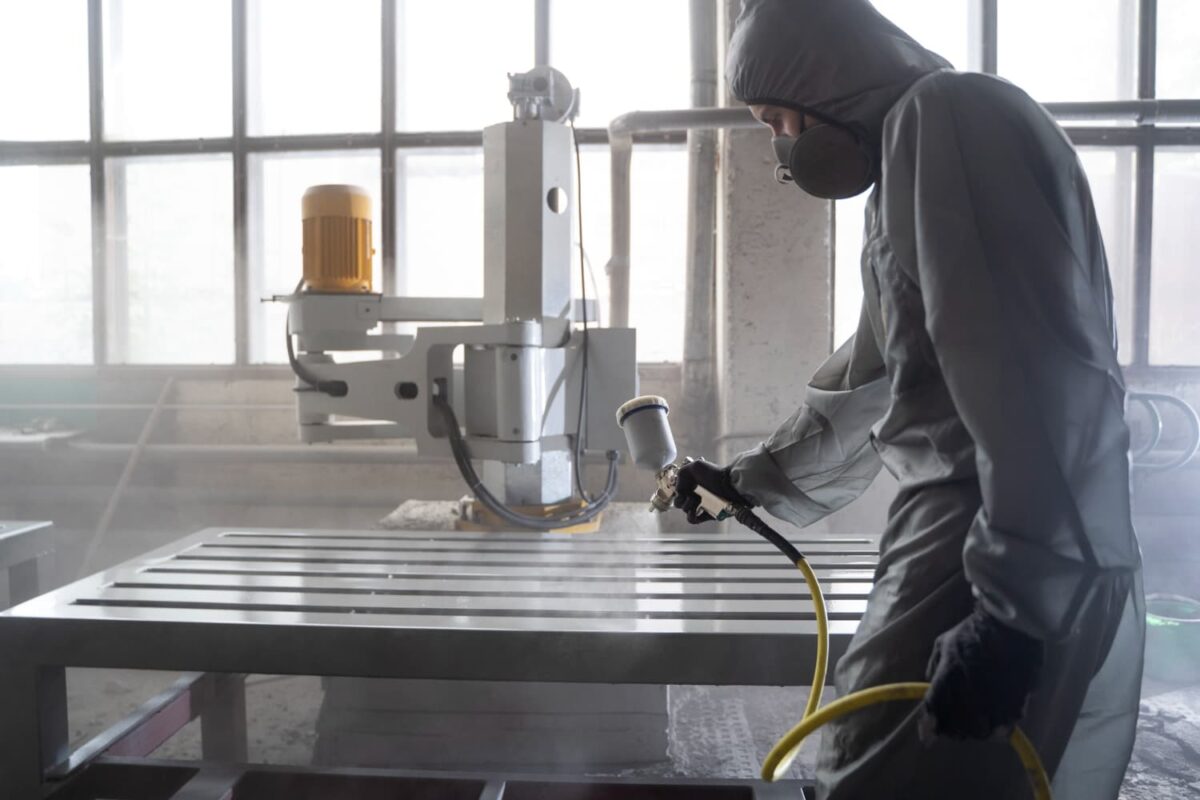In the field of materials engineering and manufacturing, aluminum is well regarded for its light weight, strength, and natural resistance to corrosion. Another appealing quality of aluminum is that you can enhance these properties by applying one of a number of kinds of coatings. This article takes a closer look at the different types of coatings suitable for aluminum, providing essential insights for those who manufacture aluminum parts.
Understanding the Basics of Aluminum Coatings
Aluminum’s natural advantages in terms of corrosion resistance and strength-to-weight ratio can be significantly amplified through coatings. These coatings serve to protect the metal’s surface, improve its aesthetic appeal, and add specific functionalities required in various industrial applications.
Why Coat Aluminum?
Aluminum is naturally covered with a thin oxide layer that offers some degree of protection against corrosion. However, in many environments, this layer just isn’t enough. Coatings enhance corrosion resistance, improve surface hardness, reduce friction, and provide thermal protection. By selecting the appropriate type of aluminum coating, one can extend the life and functionality of aluminum components by a significant amount.
Key Properties Enhanced by Coatings
- Corrosion Resistance: Coatings provide a barrier against environmental elements that cause corrosion.
- Wear Resistance: Some coatings increase the hardness of the aluminum surface, thereby resisting wear.
- Aesthetic Enhancement: Coatings can add color, gloss, or matte finishes to aluminum surfaces to meet design specifications.
- Thermal Properties: Certain coatings reflect heat or provide thermal insulation.
Types of Aluminum Coating
Different applications require different types of aluminum coating, each with unique characteristics.
Anodizing: Building a Robust, Oxide Layer
Anodizing is an electrochemical process that thickens the natural oxide layer on the surface of aluminum. This type of coating increases the material’s resistance to corrosion and wear. Anodized aluminum is also adaptable for dyeing, allowing for a broad range of colors, which makes it ideal for aesthetic applications.
Applications of Anodized Coatings
- Architectural components like window frames
- Automotive parts requiring aesthetic finishes
- Consumer electronics with colored exteriors
Powder Coating: Durable and Versatile Finish
Powder coating involves applying a dry, powdered polymer onto the aluminum and then curing it under heat. This results in a thick, durable coating that is resistant to scratches, chipping, and fading. Powder coatings come in various colors, making them popular for both industrial and decorative uses.
Industries Utilizing Powder Coated Aluminum
- Automotive industry for body panels and trim
- Appliances, providing colorful and durable exteriors
- Outdoor furniture in need of weather resistance
Electroplating: Adding a Metallic Finish
Electroplating involves coating aluminum with a thin layer of metal, such as nickel or chrome. This enhances appearance and adds corrosion and wear resistance. Electroplated aluminum is often used where both functionality and aesthetics are important.
Common Uses for Electroplated Aluminum Parts
- Decorative trim in automotive manufacturing
- Plumbing fixtures
- Electronics, particularly connectors and switchgear
Organic Coatings: Protection with Paints and Lacquers
Organic coatings, including paints and lacquers, provide a barrier against environmental damage while also offering a wide range of colors and finishes. They’re especially suited for products where a customized finish is required, though they typically offer less durability than other coating types.
Typical Products Using Organic Coatings
- Aircraft interiors
- Household items
- Packaging materials for consumer goods
Recent Innovations in Aluminum Coatings
Nano-Ceramic Coatings: Cutting-edge Protection
Nano-ceramic coatings are among the latest innovations, offering exceptional hardness and resistance to abrasions. These coatings bond at a molecular level, making them incredibly durable.
Potential Applications for Nano-Ceramic Coated Aluminum
- Aerospace components requiring extreme durability
- High-performance automotive parts
- Outdoor digital displays
Eco-Friendly Solutions: Reducing Environmental Impact
As sustainability becomes a priority for many, manufacturers are developing eco-friendly coatings that reduce volatile organic compounds (VOCs) during application. These coatings offer more environmentally conscious options without compromising performance.
Green Coating Applications
- Green building materials
- Environmentally-friendly consumer products
- Renewable energy components like solar panels
How to Choose the Right Coating for Aluminum
Selecting a coating depends on the specific properties required and which environment the component will operate in.
Factors to Consider in Coating Selection
- Intended Use: Consider whether the coating is for visual appeal, corrosion resistance, or another function.
- Environment: Environmental exposure such as saltwater, chemicals, or extreme temperatures will affect coating choice.
- Cost: The budget may dictate whether a simple organic coating or a more advanced technology like a nano-ceramic is feasible.
Consultation with Material Engineers
Involving material engineers early in the design and procurement process ensures that the chosen coating meets the performance and life cycle requirements of the aluminum components.
FAQs on Coatings for Aluminum
What is the most cost-effective coating for aluminum?
Organic coatings such as paints and lacquers are generally the most cost-effective, providing adequate protection and a range of colors suitable for many applications.
Can anodizing be combined with other coatings?
Yes, anodizing can be combined with other coatings, such as organic paints, to enhance both durability and appearance.
Are all coatings eco-friendly?
Not all coatings are eco-friendly. However, recent advancements have led to the development of coatings with reduced environmental impact, such as low-VOC options.
How do I maintain coated aluminum?
Maintenance depends on the coating type but generally includes regular cleaning with non-abrasive cleaners and immediate repair of any surface damage.
Is powder coating suitable for all types of aluminum?
Powder coating is highly versatile but may not adhere well to highly polished aluminum surfaces without appropriate surface preparation.

